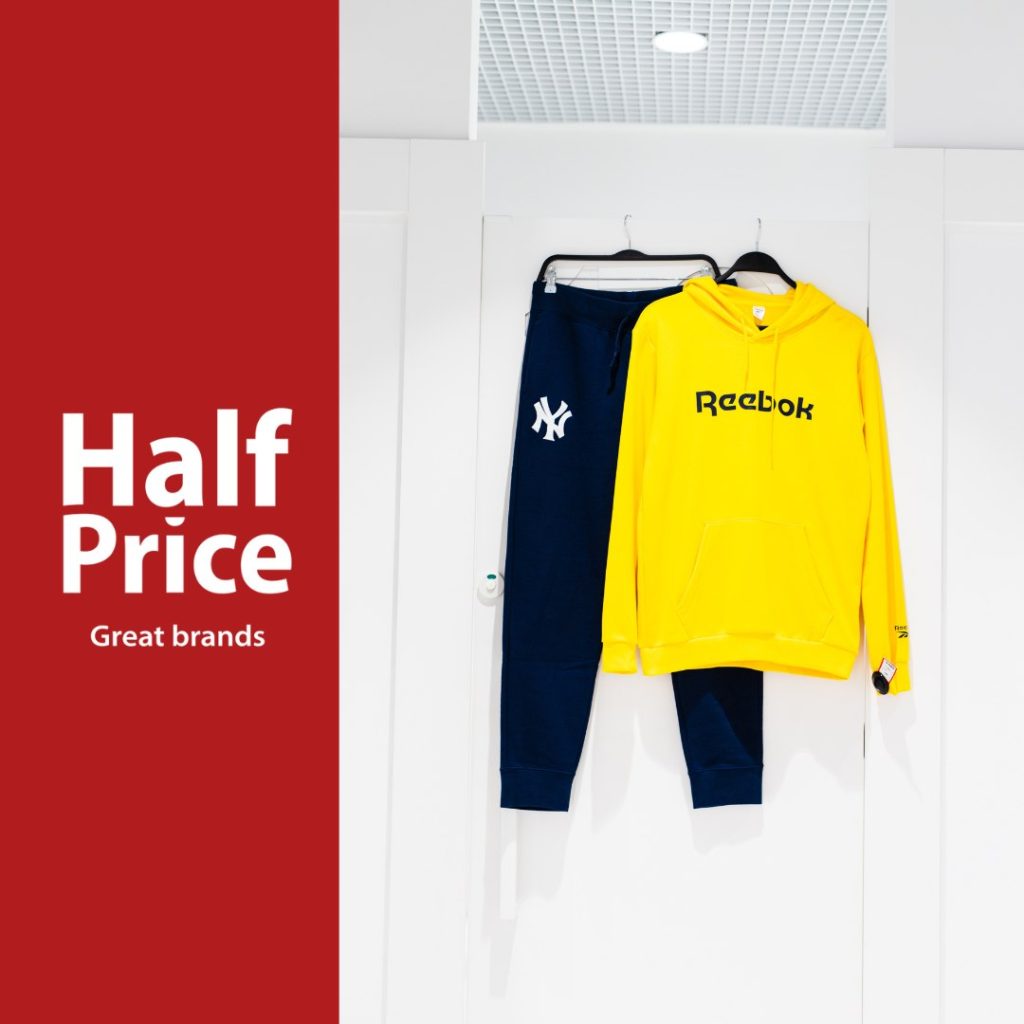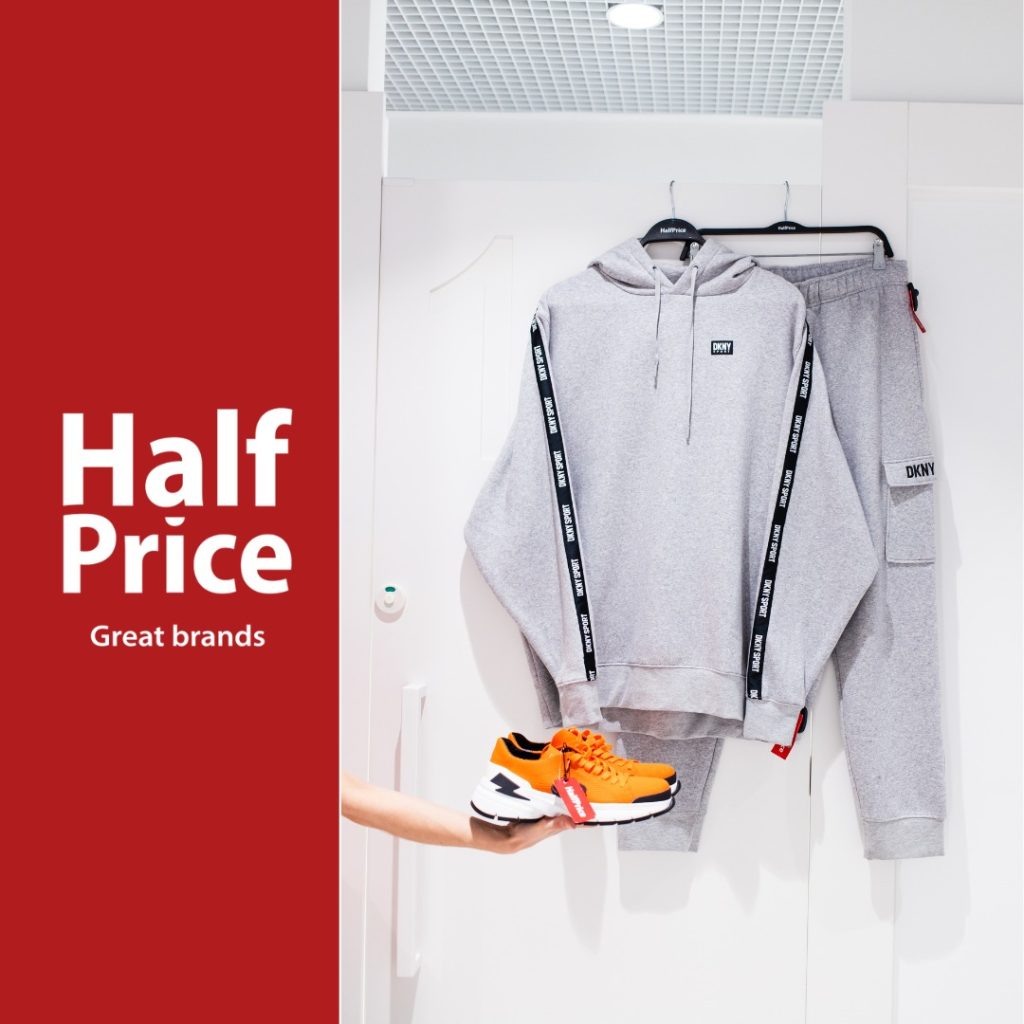- Home
- Fashion & Accessories
- Fashion on a Budget: How to Shop Like a Pro at HalfPrice

Fashion on a Budget: How to Shop Like a Pro at HalfPrice
Introduction Halfprice
Nestled within the vibrant online landscape of Poland, HalfPrice.pl beckons with a siren song of unmatched deals and designer delights. This haven for savvy shoppers is a treasure trove of discounted fashion, homeware, beauty essentials, and more, all waiting to be discovered at a fraction of their original cost.
Imagine luxury brands like Michael Kors and Valentino rubbing shoulders with trendy labels like Vans and Champion, all basking in the warm glow of price tags slashed by up to 70%. This is the reality that HalfPrice.pl crafts for its devoted clientele.
But HalfPrice.pl is more than just a discount haven; it’s an experience. It’s the thrill of the hunt, the adrenaline rush of finding that perfect piece before anyone else, and the satisfaction of knowing you’ve scored a fashion coup without breaking the bank.
The Rise of Online Shopping
The landscape of retail has undergone a seismic shift in recent years, with the rise of online shopping transforming the way we buy, sell, and interact with goods. From humble beginnings in the 1990s, online shopping has exploded into a global phenomenon, reshaping industries, influencing consumer behavior, and leaving an undeniable mark on our modern world.
Early Days and the E-Commerce Boom:
The seeds of online shopping were sown in the fertile ground of the internet’s early days. Pioneers like Amazon and eBay laid the groundwork, offering limited selections of books and collectibles. But the real boom arrived with the widespread adoption of broadband internet and secure payment gateways in the late 1990s and early 2000s. Suddenly, a world of products was accessible from the comfort of one’s home, with just a few clicks and swipes separating desire from acquisition.
Convenience and Choice Take Center Stage:
The driving force behind online shopping’s success is simple: convenience and choice. Gone are the days of battling crowded stores and limited selections. Online platforms offer an unparalleled breadth of products, from everyday essentials to niche offerings, all readily accessible at any time of day. Price comparisons are effortless, reviews provide valuable insights, and home delivery eliminates the need for schlepping bags.
The Mobile Revolution:
The rise of smartphones further fueled online shopping’s fire. With mobile apps and responsive websites, the act of purchasing became truly portable. Social media platforms integrated shopping features, blurring the lines between browsing, interacting, and buying. The result: an even more seamless and impulsive shopping experience.
Beyond the Transaction:
Online shopping’s impact extends far beyond the simple act of buying and selling. It has transformed supply chains, with logistics companies and delivery services evolving to meet the ever-growing demand. Social media influencers and online communities have emerged as powerful tastemakers, shaping trends and driving brand loyalty.
Challenges and the Future:
Despite its undeniable success, online shopping faces challenges. Concerns over data privacy and security persist. Issues of sustainability, ethical sourcing, and the environmental impact of deliveries need to be addressed. The future of online shopping lies in finding innovative solutions to these challenges, while continuing to offer consumers the convenience, choice, and value they crave.
Factors Influencing Fashion Discounts
Fashion discounts are a delightful dance between captivating customers and clearing inventory, where a multitude of factors twirl across the stage. Let’s dive into this sartorial waltz and explore the hidden forces that orchestrate those irresistible price drops:
Seasonal Sways: As trends ebb and flow with the changing seasons, so too do discounts. Winter coats waltz into sale racks as spring blossoms, while summery sundresses sashay off when autumn leaves begin to swirl. It’s a timeless tango between clearing out the old and making way for the new.
Overstock Shuffle: Sometimes, even the most captivating designs can get their steps muddled. An unexpected abundance of a particular style or colorway can lead to a clearance cha-cha, offering savvy shoppers the chance to snag a unique piece at a steal.
Competition Cha-Cha: The fashion world is a vibrant ballroom, and brands must compete for attention. To entice customers and keep their toes tapping, strategic discounts can erupt like confetti showers, luring shoppers with the promise of an irresistible deal.
Trend Tango: Trends, like fickle partners, can fade quickly. When a style loses its luster, discounts step in to gracefully escort it off the stage. This bittersweet foxtrot allows stores to make room for the next trend’s grand entrance while offering adventurous shoppers a chance to experiment without breaking the bank.
Holiday Hustle: Certain times of year, like festive holidays or end-of-season extravaganzas, become epic discount discos. Stores unleash a dazzling array of markdowns, transforming shopping into a joyous free-for-all where everyone can find a treasure to take home.
Customer Cravings: Brands are keen observers, attuned to the desires and behaviors of their shoppers. Analyzing data and tracking online interactions can reveal what styles are resonating and what needs a little extra push. Targeted discounts become personalized serenades, tempting customers with just the right offer to make them waltz right into a purchase.
Consumer Behavior
Consumer behavior, that intricate dance between desire, decision, and action, remains an endlessly fascinating puzzle. Understanding its complexities is the key to unlocking successful marketing strategies, satisfying customer needs, and thriving in the ever-evolving marketplace. Let’s delve into the heart of this enigmatic phenomenon:
Motivations in Motion: At the core of every purchase lies a motivation, a driving force that propels consumers from browsing to buying. These motivations can be as diverse as the individuals themselves, ranging from practical needs like replacing worn-out shoes to emotional desires like seeking comfort or expressing individuality. Understanding these motivations, whether conscious or subconscious, is crucial for tailoring products and messages that resonate with your target audience.
The Decision-Making Maze: From the initial spark of interest to the final click of confirmation, the consumer journey is rarely a straight line. It’s a winding maze of internal and external influences, where psychological factors like personality and past experiences mingle with environmental cues like advertising and peer pressure. Mapping this decision-making maze is essential for crafting persuasive marketing campaigns that guide consumers along the path to purchase.
Social Swirls: We are not isolated beings, and our consumer choices are heavily influenced by the social sphere around us. Family, friends, and even strangers on social media can play a significant role in shaping our perceptions, preferences, and ultimately, our buying decisions. Recognizing the power of social influence allows you to tap into trends, leverage endorsements, and build communities around your brand to amplify your reach and connect with consumers on a deeper level.
The Sensory Symphony: Humans are multi-sensory creatures, and our buying decisions are often swayed by more than just logic. Sight, sound, touch, taste, and even smell can subconsciously influence our perceptions of a product. Creating a sensory experience that engages all five senses can leave a lasting impression on consumers, differentiating your brand and triggering positive associations with your products.
The Evolving Enigma: Consumer behavior is not static; it’s a constantly evolving dance, shaped by cultural shifts, technological advancements, and economic landscapes. Staying ahead of these changes requires ongoing research, experimentation, and a willingness to adapt. By embracing the dynamic nature of consumer behavior, you can ensure your brand remains relevant, resonates with evolving needs, and continues to captivate the enigmatic shopper within us all.
Sustainability in Half Price Fashion
The realm of fashion, with its ever-changing trends and alluring deals, often clashes with the pressing need for sustainability. Half Price fashion, with its focus on discounted past-season items and overstock, presents a unique opportunity for this dance between affordability and environmental responsibility. Let’s explore the steps Half Price can take to turn this waltz into a sustainable tango:
Redefining Value: Half Price thrives on offering great value, but this can be redefined to include environmental and social impact alongside price tags. Highlighting the extended life of garments through resale and the reduced waste generated by preventing them from landfills can create a compelling value proposition for eco-conscious consumers.
Championing Sustainable Brands: Partnering with brands that prioritize sustainable materials and ethical production practices sends a powerful message. Promoting these brands through dedicated sections, special discounts, or collaborative initiatives can incentivize customers to make conscious choices while enjoying the price advantage.
Transparency Tango: Transparency is key to building trust with eco-conscious consumers. Sharing information about the origin of materials, production processes, and end-of-life options for garments empowers customers to make informed choices and feel good about their purchases.
Pre-Loved Gems: Embracing the pre-loved market can be a win-win. Partnering with vintage stores or offering dedicated sections for second-hand clothing expands Half Price’s offerings while extending the life cycle of garments and attracting environmentally conscious customers.
Upcycling the Encore: Upcycling breathes new life into unwanted items. Offering DIY workshops, collaborating with upcycling artists, or showcasing upcycled creations in-store can inspire customers to get creative and reduce their fashion footprint.
Beyond the Rack: Sustainability goes beyond the clothes themselves. Reducing energy consumption in stores, minimizing packaging waste, and offering eco-friendly delivery options are all steps in the right direction.
Engaging the Community: Raising awareness about sustainability through educational campaigns, partnerships with environmental NGOs, and community events can foster a sense of responsibility and encourage collective action.
Remember, the journey towards sustainable Half Price fashion is a continuous dance, not a one-step finale. By embracing these steps and continuously innovating, Half Price can strike a harmonious balance between affordability, sustainability, and customer satisfaction, creating a fashion experience that resonates with the values of today’s conscious consumers.
Challenges and Opportunities
Half Price fashion, with its treasure trove of discounted finds, presents a compelling proposition for budget-conscious shoppers and sustainability enthusiasts alike. Yet, within this enticing world dance two sides of the same coin: challenges that threaten its long-term viability and exciting opportunities to rewrite the narrative of fast fashion. Let’s waltz into this intricate balancing act:
Challenges:
- Ethical Sourcing: While off-price can reduce waste by preventing overstock from landfills, concerns linger about the ethical sourcing practices of some fast-fashion brands. Ensuring transparency and traceability throughout the supply chain is crucial for building trust with sustainability-minded consumers.
- Greenwashing and Misinformation: False claims about sustainability abound in the fashion industry. Half Price needs to be vigilant in verifying green credentials and educating customers to differentiate genuine eco-conscious practices from mere marketing tactics.
- Short Lifespan: Discounted prices can incentivize quick purchases and disposals, contributing to the problem of overconsumption and short-lived clothing. Highlighting durability, timeless styles, and repair options can encourage customers to extend the life of their garments.
- Waste Dilemma: Returns and unwanted items from the discount bin still generate waste. Exploring alternative solutions like upcycling initiatives, partnerships with donation centers, and responsible disposal methods are crucial for closing the loop.
- Perception Hurdles: Half Price may face negative stereotypes associated with “cheap” or “low-quality” clothing. Focusing on curated selections, quality assurance measures, and showcasing responsible practices can elevate the brand’s image and attract a wider audience.
Opportunities:
- Championing Sustainability: Half Price can become a leader in sustainable off-price retail by highlighting eco-conscious brands, promoting repair and upcycling, and minimizing their environmental footprint. This can attract and retain a loyal customer base who value responsible fashion.
- Circular Economy Pioneer: Partnering with organizations promoting clothing take-back programs, facilitating second-hand sales, and exploring innovative recycling solutions can position Half Price as a pioneer in the circular economy of fashion.
- Educating the Consumer: By providing clear information about materials, production practices, and end-of-life options, Half Price can empower customers to make informed choices and be conscious consumers. This can foster a positive impact beyond their own purchases.
- Value Redefined: Redefining value to encompass sustainability and ethical practices can differentiate Half Price from traditional budget retailers. Offering transparency, durability, and responsible choices can create a unique, value-driven proposition that resonates with a broad audience.
- Innovation Playground: The dynamic nature of the off-price sector allows for experimentation and innovation. Developing sustainable packaging solutions, exploring alternative materials, and promoting eco-friendly cleaning methods are just a few ways Half Price can drive positive change within the fashion industry.
By acknowledging the challenges and embracing the opportunities, Half Price can waltz into a future where affordability and sustainability coexist gracefully. Through responsible sourcing, conscious consumer education, and innovative solutions, Half Price can rewrite the narrative of fast fashion and become a champion for eco-friendly style, proving that the best deals come with the lightest environmental footprint.
Case Studies
In our exploration of Half Price fashion’s dance between affordability and sustainability, let’s turn to the stage and learn from those who have already mastered the steps. Here are three inspiring case studies of successful sustainable off-price initiatives:
1. Trove (US): From Fast Fashion to Conscious Curation:
Launched in 2018, Trove disrupted the off-price scene by focusing on curated selections of vintage and second-hand clothing. They partner with ethical vintage vendors and employ rigorous vetting processes to ensure high quality and authentic pieces. By prioritising pre-loved garments and extending their life cycle, Trove diverts items from landfills while offering unique, sustainable fashion finds.
Key Takeaway: Curating quality second-hand items can be a viable and profitable alternative to traditional overstock models, catering to a growing demand for sustainable fashion.
2. Trashy Bags (India): Sustainable Style on a Budget:
This Indian brand reimagines textile waste and discarded materials into vibrant, contemporary fashion accessories. From discarded leather scraps to plastic bags, Trashy Bags transforms waste into desirable, affordable products. Their commitment to transparency, local sourcing, and upcycling empowers artisans and champions sustainable practices.
Key Takeaway: Upcycling and innovative material usage can unlock new possibilities in affordable fashion while addressing the critical issue of textile waste.
3. Outland Denim (Australia): Ethical Production Takes Center Stage:
Outland Denim stands out by combining ethical standards with off-price appeal. They offer premium denim made in partnership with a garment factory in Cambodia, employing previously trafficked women and providing them with fair wages, skills training, and a safe work environment. Their model demonstrates that ethical production and affordability can co-exist, empowering communities and setting a high bar for the industry.
Key Takeaway: Integrating ethical production practices into the off-price model is not only possible but also impactful, creating positive social and environmental change.
These three case studies represent diverse approaches to sustainable off-price retail, each offering valuable lessons for Half Price. Whether it’s prioritizing pre-loved treasures, upcycling waste into fashion statements, or championing ethical production, Half Price can find inspiration in these pioneers and carve its own path towards a sustainable future.
Conclusion Halfprice
Half Price, the off-price haven, invites us to waltz through a world of captivating deals and stylish treasures. But beneath the alluring discounts and trendy threads lies a hidden dance, a complex choreography where affordability twirls with sustainability.
This exploration has revealed the multifaceted nature of Half Price fashion. We’ve seen the challenges it faces – ethical sourcing dilemmas, greenwashing pitfalls, and the ever-present waste conundrum. Yet, we’ve also witnessed the dazzling opportunities for transformation: championing sustainable brands, embracing the circular economy, and educating consumers to be conscious participants in this sartorial tango.
The case studies offered a glimpse into the graceful steps of successful pioneers, each a testament to the potential of off-price fashion to rewrite the narrative of sustainability. Trove’s curated second-hand treasures, Trashy Bags’ upcycled ingenuity, and Outland Denim’s ethical production showcase diverse pathways for Half Price to follow.
The conclusion, however, is not a final curtain call. It’s an invitation to continue this captivating dance, to experiment, innovate, and evolve. Half Price can embrace the challenges, seize the opportunities, and learn from the leaders. By prioritizing quality over quantity, promoting responsible practices, and empowering conscious choices, it can rewrite the rules of the game.
Imagine a Half Price where sustainability is not just a whisper on the wind, but a vibrant melody woven into the fabric of every deal. Imagine shelves adorned with eco-conscious brands, upcycled gems, and timeless pieces built to last. Imagine a community of informed customers dancing in step with Half Price, their purchases driven by both value and responsibility.
This is not a utopia, but a potential future, a harmonious dance where affordability and sustainability move in perfect time. Half Price holds the key, the rhythm in its fingertips. It can lead the way, not just in the realm of off-price fashion, but in the broader landscape of a more conscious, sustainable world.
Let Half Price pirouette towards a future where fashion and responsibility embrace, where affordability and sustainability find their perfect balance, and where every treasure hunt leads to a step towards a greener, more ethical world.







